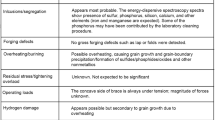Abstract
The joint signature of m coherent systems is an extension of the joint signature of two systems introduced in 2010. It is interesting because the joint signature depends only on the mechanism of the systems’ composition rather than the underlying distribution function of the component lifetimes. It also depends on the permutation of the failure times. As there are m! permutations we need to compute m! joint signatures, many of which are the same. Even if the joint signatures for two different orderings of the system lifetimes are different, it is sometimes possible to obtain one of them via the other one by a transformation. In this article, we consider several parallel systems with independent and identically distributed component lifetimes and investigate how to classify the m! permutations of the failure times according to the same joint signature. Further, we partition the result into sets based on transformed joint signatures. Moreover, we establish a relationship between the different sets in the last partition so that the related joint signatures can be converted into each other by small modifications. By this procedure, we are able to compute the m! joint signatures together efficiently. Using several examples, we illustrate that our classifications save us a large number of calculations. We introduce an algorithm to determine the partitions and present a computer program for the algorithm. The case of series-parallel systems is quite complicated and is discussed briefly.
Similar content being viewed by others
References
Barlow RE, Proschan F (1975) Statistical theory of reliability and life testing. Holt, Rinehart and Winston, New York
Da G, Zheng B, Hu T (2012) On computing signatures of coherent systems. J Multivar Anal 103(1):142–150
D’Andrea A, De Sanctis L (2015) The Kruskal-Katona theorem and a characterization of system signatures. J Appl Probab 52:508–518
Eryilmaz S (2012) The number of failed components in a coherent system with exchangeable components. IEEE Trans Reliab 61(1):203–207
Lindqvist B, Samaniego FJ, Huseby AB (2016) On the equivalence of systems of different sizes, with applications to system comparisons. Adv Appl Probab 48(2):332–348
Marichal J-L (2015) Algorithms and formulae for conversion between system signatures and reliability functions. J Appl Probab 52:490–507
Navarro J, Balakrishnan N, Samaniego FJ (2008) Mixture representations of residual lifetimes of used systems. J Appl Probab 45:1097–1112
Navarro J, Samaniego FJ, Balakrishnan N, Bhattacharya D (2008) On the application and extension of system signatures in engineering reliability. Nav Res Logist 55:313–327
Navarro J, Samaniego FJ, Balakrishnan N (2010) The joint signature of coherent systems with shared components. J Appl Probab 47(1):235–253
Navarro J, Samaniego FJ, Balakrishnan N (2013) Mixture representations for the joint distribution of two coherent systems with shared components. Adv Appl Probab 45(4):1011–1027
Samaniego FJ (1985) On closure of the IFR class under formation of coherent systems. IEEE Trans Reliab 34:69–72
Samaniego FJ (2007) System signatures and their applications in reliability engineering. Springer, New York
Samaniego FJ, Navarro J (2016) On comparing coherent systems with heterogeneous components. Adv Appl Probab 48(1):88–111
Zhang Z, Meeker WQ (2014) The residual lifetime of surviving components from failed coherent systems. IEEE Trans Reliab 63(2):534–542
Author information
Authors and Affiliations
Corresponding author
Rights and permissions
About this article
Cite this article
Mohammadi, L. The joint signature of parallel systems for different permutations of failure times. Comput Stat 32, 1727–1746 (2017). https://doi.org/10.1007/s00180-017-0718-2
Received:
Accepted:
Published:
Issue Date:
DOI: https://doi.org/10.1007/s00180-017-0718-2




